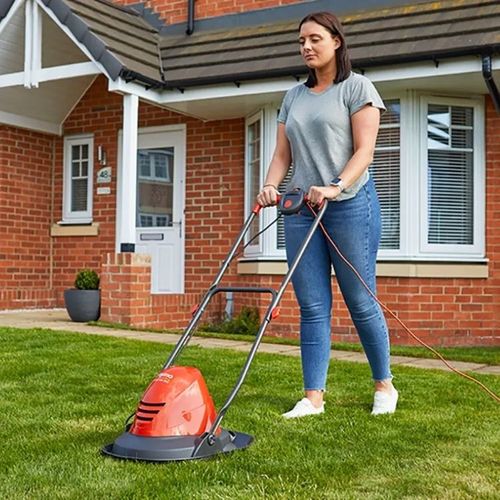The combination of warm weather and outdoor activities sends millions of Americans to emergency rooms each summer. Most of their injuries could have been prevented. Here, an emergency room physician reveals the biggest dangers and how to avoid them...
LAWN MOWERS
The lawn mower is probably the most dangerous tool around the house. A nine-year study published in Annals of Emergency Medicine reports an annual average of 74,000 emergency room visits due to lawn mower injuries. Most injuries are caused by debris flying into the bodies or eyes of lawn mower operators and bystanders. About one-third of lawn mower-related hospitalizations are due to injuries from the blades, including the loss of toes and/or fingers.
Self-defense: Remove twigs, sticks and rocks before mowing. Keep bystanders, especially children, away from the mower. Wear shoes—not sandals—long pants and safety goggles while mowing. Don't depend on glasses or sunglasses to protect eyes—they won't prevent debris from entering at the sides.
Also, wear hearing protection (ear plugs, ear mufflers, etc.). Don't use an iPod or similar portable music device-you really have to crank up the volume to hear the music, which can result in permanent hearing damage.
ELECTRIC HEDGE TRIMMERS
I see at least one patient a month who has been hurt by a hedge trimmer. It can cut off a finger instantly or cause a nasty injury-crushing tissue and bone-that is very difficult to repair.
Self-defense: Wear heavy leather or canvas gloves, sturdy shoes and long pants when using a trimmer. Don't overreach-you may lose your balance. Turn off the trimmer and unplug it before trying to clear it of stuck debris.
GARAGE DOORS
Some manual and electric garage doors have large,heavy springs on each side. A spring that suddenly loosens can hit your head with the force of a swinging baseball bat. A spring also can take off a finger.
Self-defense: Never attempt to repair or replace a garage door yourself. Hire an experienced professional to do it.
TICK BITES
Lyme disease gets most of the headlines, but ticks carry many other diseases, including ehrlichiosis and Rocky Mountain spotted fever, both bacterial infections that can cause fatigue, fever, severe muscle pain and headaches-and also can be life-threatening.
Self-defense: Removing a tick from your skin within 72 to 24 hours almost guarantees that you won't get sick. Grip the tick close to the skin with tweezers and pull it out. If part of the tick remains in the skin, try your best to remove it. If you're not able to remove it all, see a doctor. \fash the area well, and apply an antibiotic ointment to prevent infection.
If you're spending time in grassy or wooded areas, you can prevent most tick bites by using an insect repellent that contains DEET. Apply the repellent to exposed skin and clothing. A non- DEET repellent, Picaridin, is useful for people whose skin is sensitive to DEET. Also wear closed shoes rather than sandals...tuck long pants into socks...and wear a long-sleeved shirt, tucked in.
POISON IVY, OAK AND SUMAC
All of these plants contain urushiol, an oily substance that can cause an itchy rash in people who are sensitive to it. (To view the plants so you can identify them, go to www.poisonivy.aesir.com.)
As little as one-billionth of a gram of urushiol can cause the rash-so even brushing against one of these plants is a problem. The oil also can get on tools, gloves and clothing and stays active indefinitely, so it must be washed off.
Self-defense: If your skin comes into contact with one of the "poisons," wash the area immediately with soap and water. If you're outside and don't have access to soap orwate! splash the area with any liquid-soda, beer, etc. If a rash develops, apply hydrocortisone ointment, available at drugstores. If the rash worsens, see a doctor.
CYCLING
Each year, bicycle accidents result in more than half a million visits to emergency rooms. More than 800 bicyclists die annually, many from head injuries.
Self-defense: Always wear a helmet, even if you (or your children) are riding close to home. Studies indicate ttnt helmets are up to 85% effective in preventing head injuries. Helmets with visors are helpful for preventing facial lacerations. Be sure the helmet fits properly and is buckled snugly.
Warning: Most cycling deaths occur between 6 pm and 9 pm, when visibility is diminished. 'Wear reflective clothing to make yourself more visible.
SWIMMING
Drowning is a leading cause of accidental death in the US.
Reasons: People overestimate their swimming ability...panic in deep water or fast currents... or consume large amounts of alcohol before entering the water.
Self-defense: Enter unfamiliar water feet first to prevent head and neck injuries. Don't depend on flotation devices-they can failand sink. Never drink alcohol before or while swimming.
Danger for women: The bacteria that cause urinary tract infections thrive in moist environments. Women who sit around in wet swimsuits give these organisms an opportunity to proliferate and migrate into the urethra-and possibly up into the kidneys, resulting in a potentially life-threatening infection. Change into dry clothing after you're done swimming. Also, drink lots of water-it increases urination, which helps flush bacteria from the urethra.
